In the vast world of the internet, where viral content spreads like wildfire, one particular Facebook photo has captured the attention and curiosity of many. At first glance, it appears to be an innocuous picture, but once you zoom in, it reveals something that can evoke fear in the hearts of many: a camouflaged snake. Can you spot it below?

The viral photo showcases the incredible camouflage abilities of the copperhead snake, a North American pit viper species known for its distinctive copper-red head, which gives it its name. Copperheads are medium-sized snakes, typically ranging from 2 to 3 feet in length, with unique dorsal patterns characterized by dark, chestnut-brown, or reddish-brown crossbands on a background of lighter brown, tan, salmon, or pinkish coloration. This pattern helps them blend seamlessly into their natural habitat, making them difficult to spot at first glance.
If You Haven’t Spotted It Yet, You Can See It Below.

Copperheads: The Camouflaged Snake
Copperheads, like other pit vipers, have “heat-sensory pits” between their eyes and nostrils on each side of their heads.1 These pits allow them to detect minute temperature differences in their surroundings, helping them accurately strike at potential prey. Copperheads are primarily active during spring and fall days but become nocturnal during the hot summer months. They are known to be semi-social, hibernating in communal dens during winter and often returning to the same den each year.
One remarkable aspect of copperheads is their ability to reproduce through a process known as asexual reproduction or parthenogenesis. This means female copperheads can give birth to live young without mating with a male. These super camouflaged snakes usually mate from February to May, and late August to October, and females give birth to live young in late summer or fall.
While copperheads are venomous, their venom is relatively mild compared to other venomous snakes, and their bites are rarely fatal for humans. However, anyone bitten by a copperhead should seek immediate medical attention, especially children, the elderly, and those with compromised immune systems, who may react strongly to the venom.
Beyond the fascination with the viral photo, copperhead snakes are an essential part of their ecosystems, helping control rodent populations and keeping tick numbers in check. They play a valuable role in maintaining ecological balance.
Read: Huge 12-foot python slithers through toilet, terrifying homeowner
7 Other Camouflaged Snakes
Apart from copperheads, numerous other camouflaged snake species have impressive camouflage abilities, making them masters of disguise in their respective habitats.2 Let’s take a brief look at seven such remarkable snakes:
1. Twig Snake
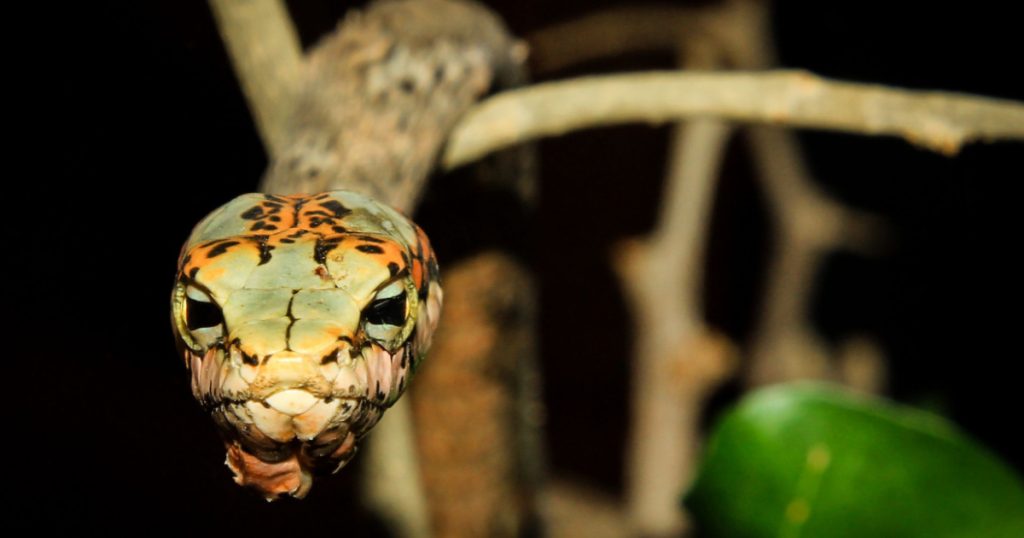
The Twig Snake (Thelotornis capensis) is Native to parts of Africa; the twig snake’s body color closely resembles the branches and twigs of its habitat, allowing it to blend in seamlessly.
2. Spider-Tailed Horned Viper
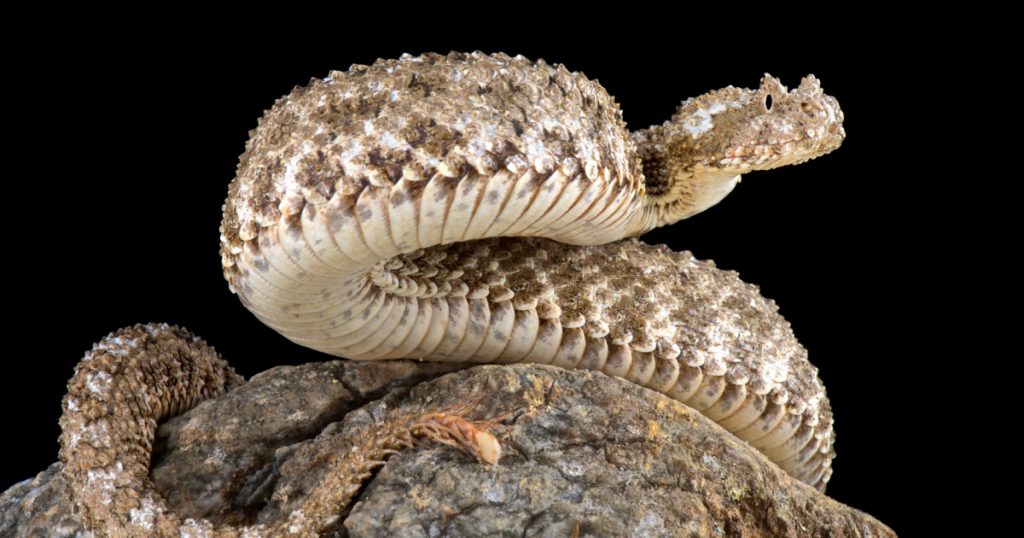
The Spider-Tailed Horned Viper (Pseudocerastes arachnoides) is commonly found in Iran. This viper species has a tail that mimics the appearance of a spider, luring birds closer before striking.
3. Bushmaster
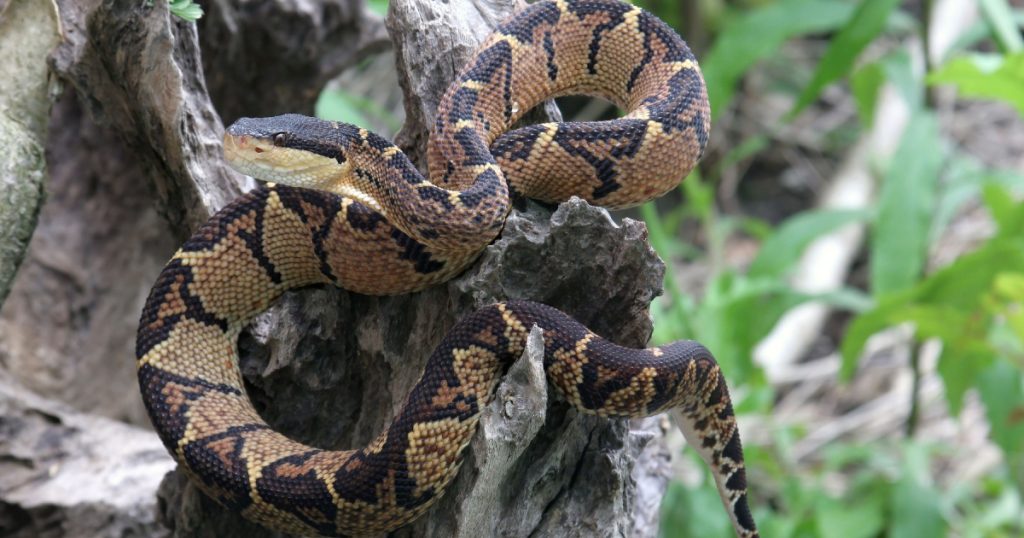
The Bushmaster (Lachesis muta) is the largest pit viper in the Americas and possesses a beautifully beaded pattern that helps it remain hidden in its environment.
4. Emerald Tree Boa
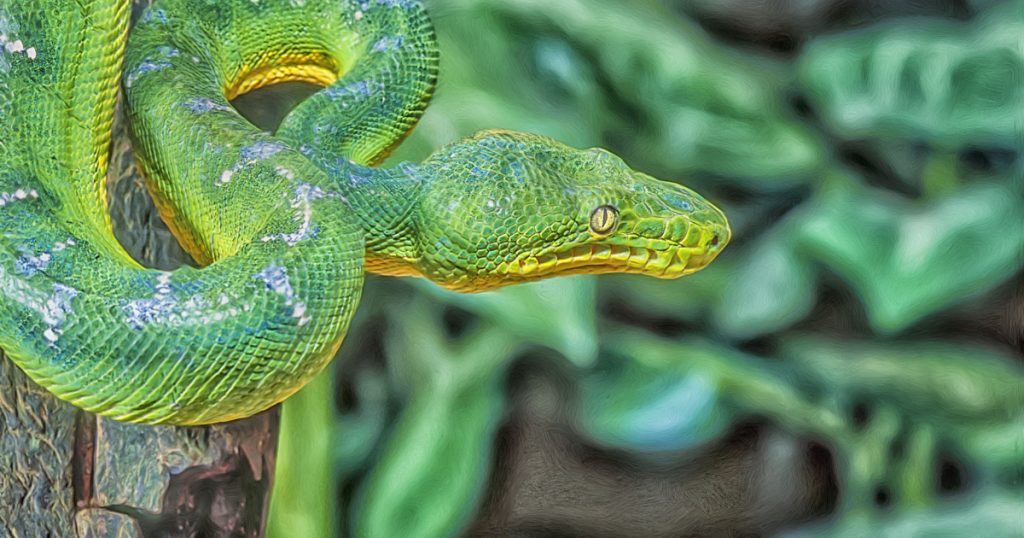
The Emerald Tree Boa (Corallus caninus) is native to the Amazon Basin. This sedentary tree snake has a vivid green color with white markings that mimic sunlight filtering through the canopy.
Read: Super-size trapdoor spider discovered in Australia
5. Garden Tree Boa
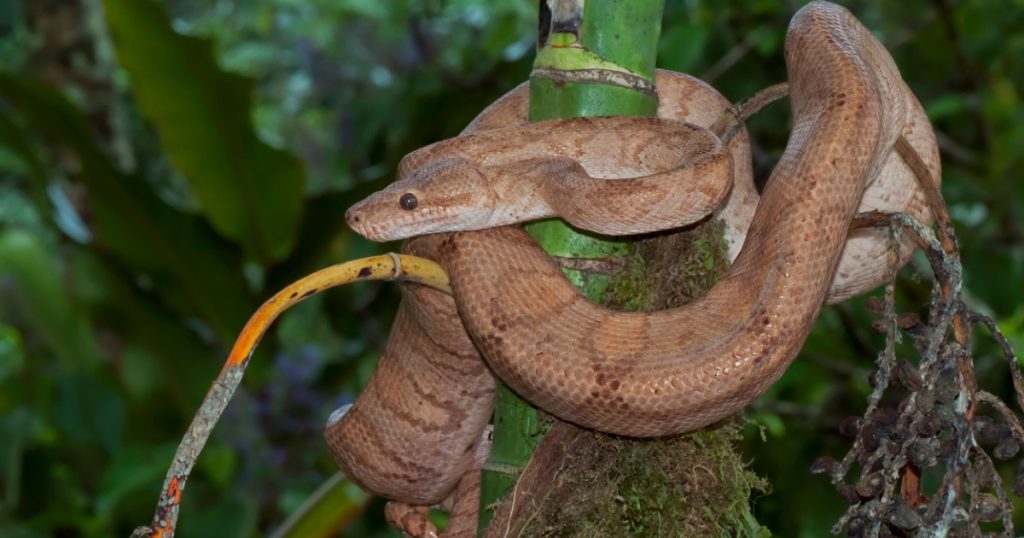
The Garden Tree Boa (Corallus hortulanus) is found in various color patterns and are masters of camouflage in the trees, making them difficult to spot.
6. Rhinoceros Viper
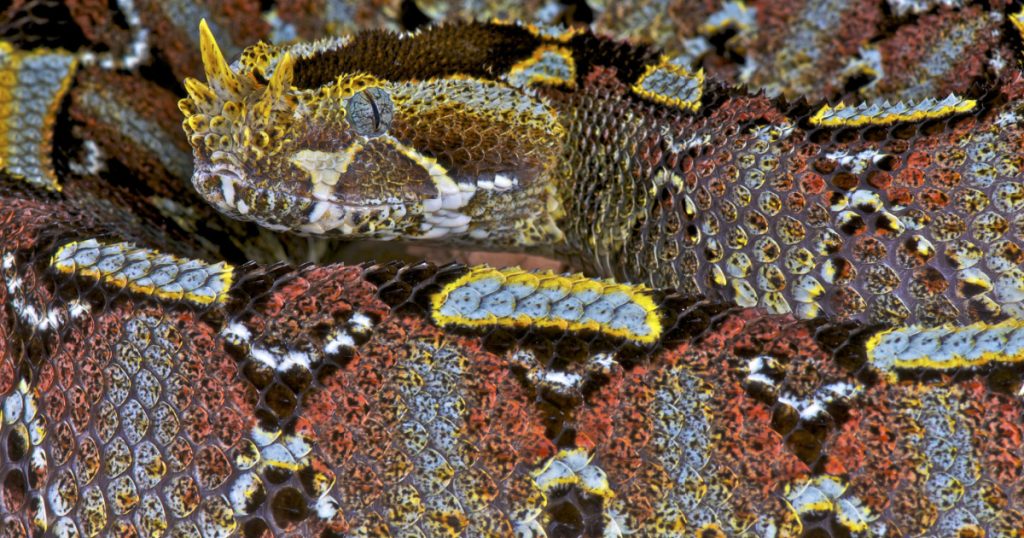
The Rhinoceros Viper (Bitis nasicornus) is named for its horn-like scales. This viper uses disruptive camouflage to blend into its surroundings effectively.
7. Tentacled Snake
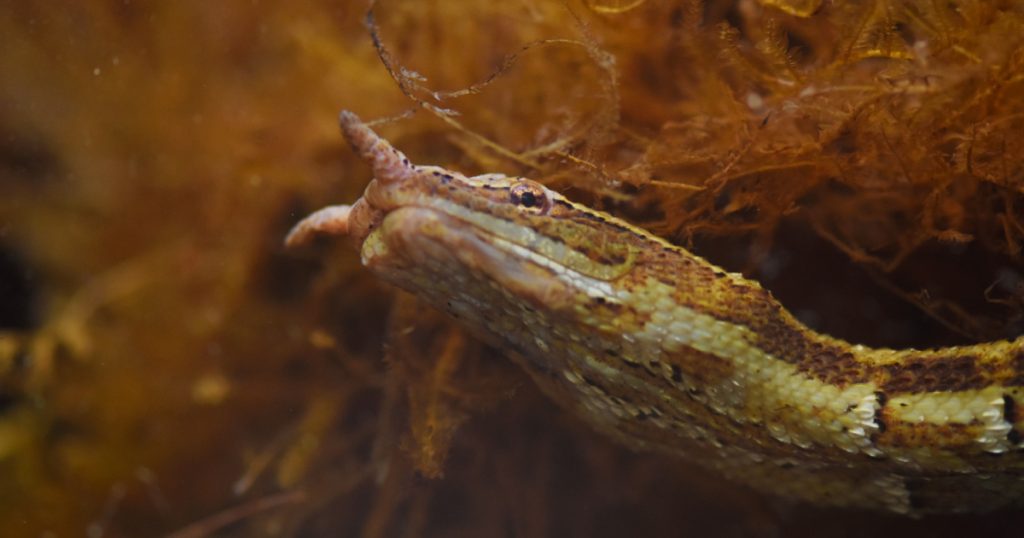
The tentacled Snake (Erpaton tentaculum) is fully aquatic. This snake hides among water plants, using its skin texture and coloration to mimic the environment.
In the diverse world of camouflaged snakes, these species have evolved ingenious camouflage strategies to survive and thrive in their natural habitats. As awe-inspiring as they are, it’s essential to respect their space and understand their critical ecological roles in maintaining the delicate balance of their ecosystems. So, the next time you encounter a seemingly ordinary picture that captures your attention, take a closer look – you might just uncover a mesmerizing world of wildlife hiding in plain sight.
Keep Reading: 7 Easy Ways To Keep Snakes Away From Your Yard
Sources
- “Copperhead snakes: Facts, bites & babies.” Live Science. Ben Biggs and Jessie Szalay. July 31, 2022.
- “10 Camouflaged Snakes That You’ll Never See Coming!” A-Z Animals. Gail Baker Nelson. July 31, 2023.

